Sometimes you just have to do it
When not to be precious with your work.
The last time we checked in on this spruce, I transplanted it from dense nursery soil into an airy bonsai mix. A year of free growth has let the roots fill the new pot, and as you can see in the photo above, the tree is covered in new buds.
I decided last year that one of the trunks had to go. They look too symmetrical. Conifers don’t grow like this outdoors. Those that do become top heavy and are likely to blow over.
My solution is to make one of the trunks look like it did just that—snap off in the wind. Spears of deadwood on bonsai are called jin, and they’re a common feature of coniferous bonsai designs. You’ll find jin on conifers in the wild, too, especially high elevation trees subject to fast winds. I don’t have any experience with jin, so I’ve been hesitant to work on this tree. Bonsai mistakes can last forever, especially when they involve deadwood.
When I started writing for the internet in college, each newly published article felt like a national holiday. I’d stare at the byline as if it were a rune. Somebody thought my work was worth publishing on their website? How could this be? I wasn’t a writer, not like the writers I read online. Yet there was my name.
Of course I had been blogging and making websites since middle school. I knew how to fill a content management system with copy and hit the publish button. But it wasn’t the same. These articles were real and rare. At the time we believed that links on the internet lasted forever, so I treated each story like the precious jewel I thought it to be. I obsessed over sentences and rhetorical devices. Am I communicating clearly? Am I doing it with style?
The internet is insatiable. Once you start feeding it, you can’t stop. The more I wrote and posted, the less precious the act felt. Last year an old employer asked me to review a list of 700 urls under my byline to mark which I wanted to save from deletion. There were so many I couldn’t remember writing.
I think it’s good and healthy that practice and precious have an inverse relationship in creative work. Sometimes you just have to do something for the sake of doing it, even though it’ll turn out poorly. So will the next one, and the five after that. If each project is precious, the work becomes insurmountable. You spend more time worrying about how it will turn out than actually giving it a shot.
Today I look at this styling and only see problems. The tree looks flat; there aren’t enough rear-facing branches. The apex is awkward. I think I left the jin too high. It’s an awkward novice design, and now I’m stuck with it.
I should do another 10 of these to get a better feel for the material. Experience how it feels to tease fibers of wood apart. The torque and torsion. They’d likely look as rough as this tree does, but the next set of 10 might be better.
You create a jin by roughing up the end of a cut branch with pliers. Grab hold of a piece of wood that starts to flake, then roll the bark around the pliers as if you were peeling a stubborn plantain.
I’m reasonably satisfied with the jin itself. I think the break looks convincing and I like that you can see knots up and down the trunk from old branches. Making a jin was the right call. Even though it’s awkward, the tree looks more organic. Its outline forms the rough triangle profile common to coniferous bonsai.
It can’t all be precious. Most times, the experience is more important than the results. When I managed a team at my last media job, I tried to drill this idea into all my kids’ heads. Naturally I don’t take my own advice.
Dwarf Alberta spruce is a common bonsai subject because it’s cheap and ubiquitous in garden centers, especially around Christmas. That’s how I found mine for $20. Bonsai people recommend against working with this tree because it has quirks that pose a challenge for bonsai. Look around the web and you won’t find many great specimens.
I’ve decided this is a benefit. Here is a cheap tree with no hope for beauty. Nothing about it is precious. Bendy dwarf Alberta spruce branches take forever to set into shape and thus require years of wiring. However this also means they’re tolerant of manhandling as I practice my wiring technique. What the cultivar lacks in artistic potential, it makes up in resilience. I’ve removed most of the tree’s foliage in this styling. If it were a more valuable conifer, I may not have taken the risk. I would have spread the work out over multiple seasons. Taken longer to learn less.
In my head, the tree is already dead and in the compost pile. That means I’m free to do something with it while it’s alive.
Tree reading
Researchers have found a link between plant photosynthesis and a fifth (?!) state of matter. [UChicago News, via noodsletter]
Pando, the world’s largest organism, speaks to you. [Ecosystem Sound]


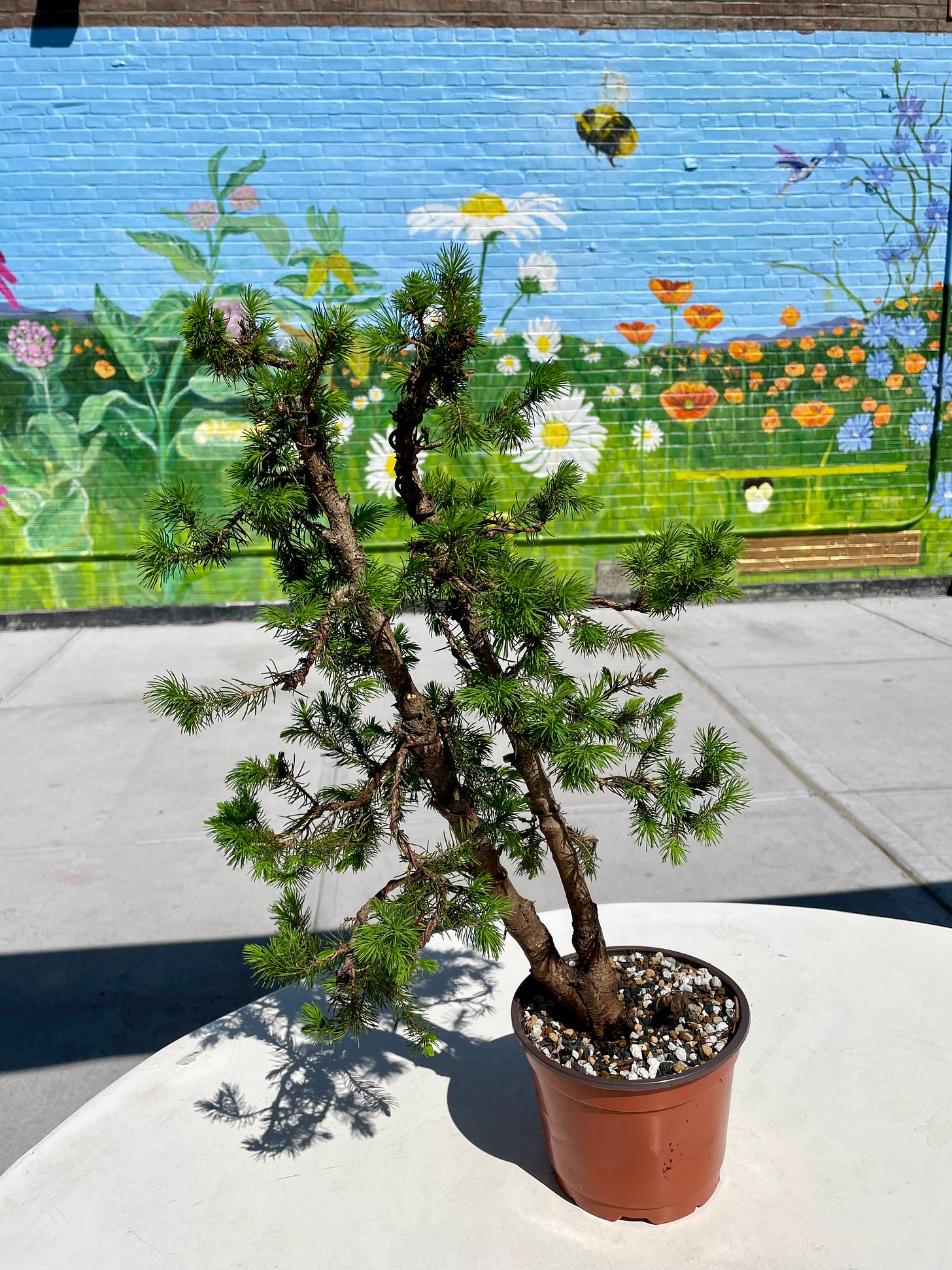
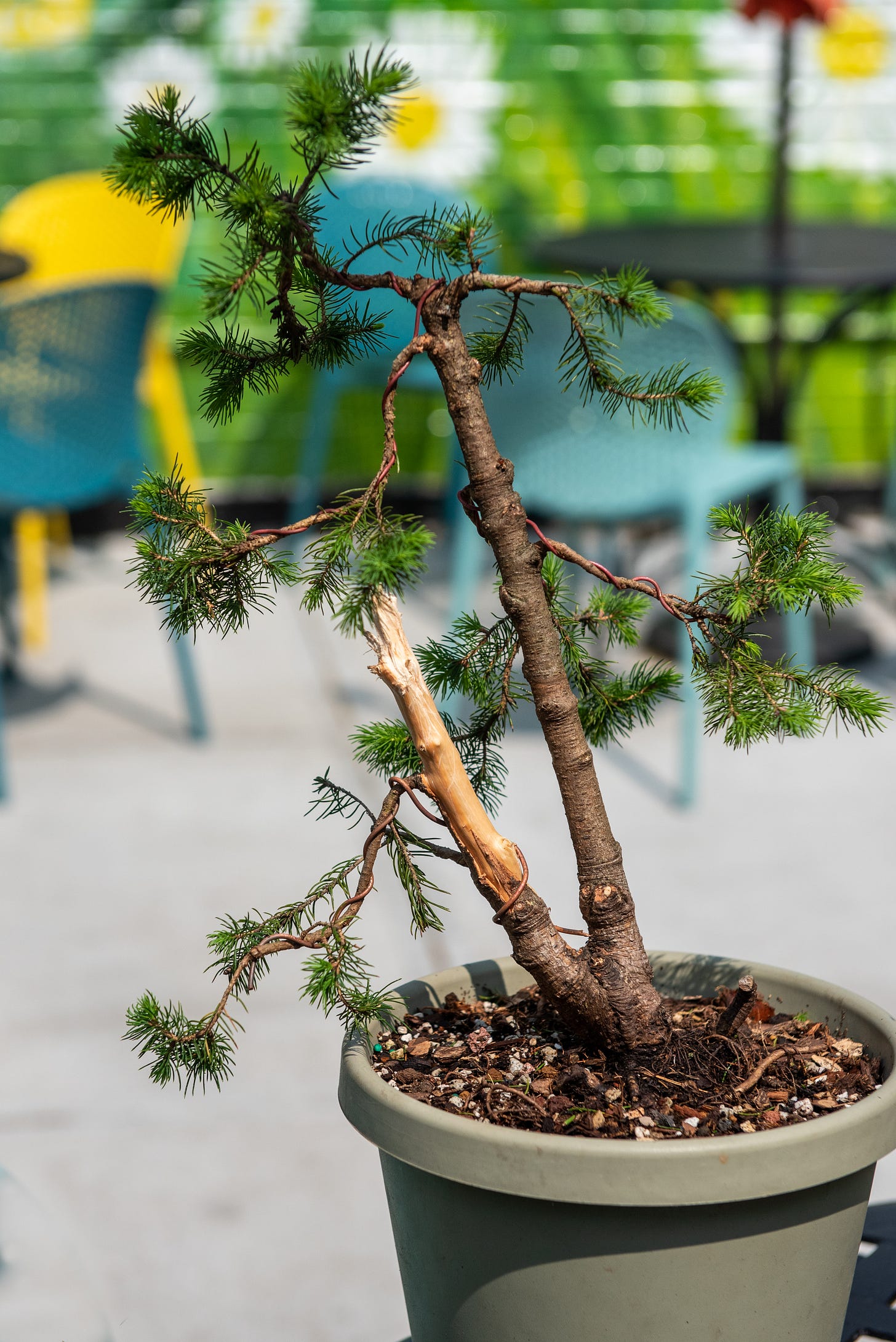
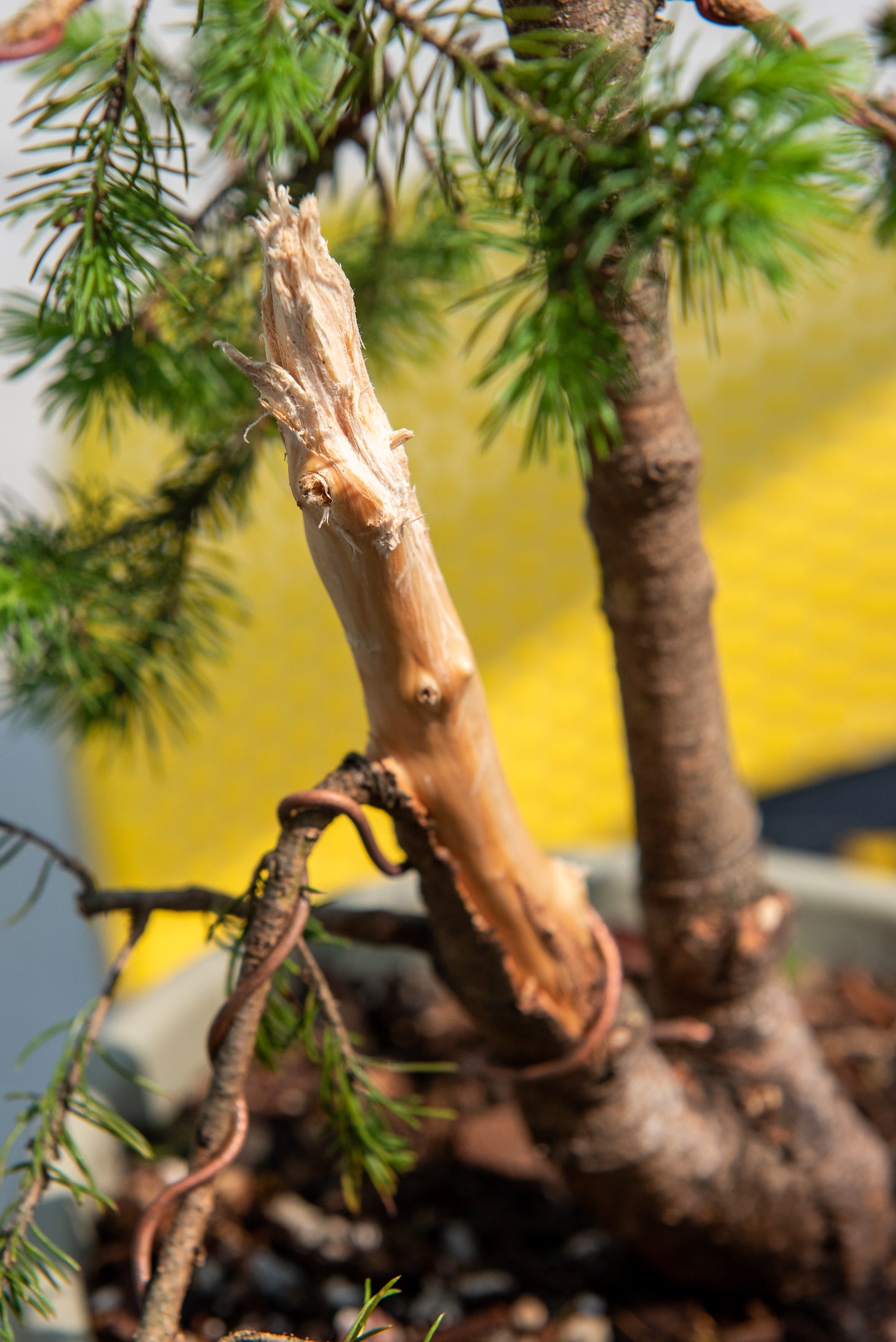
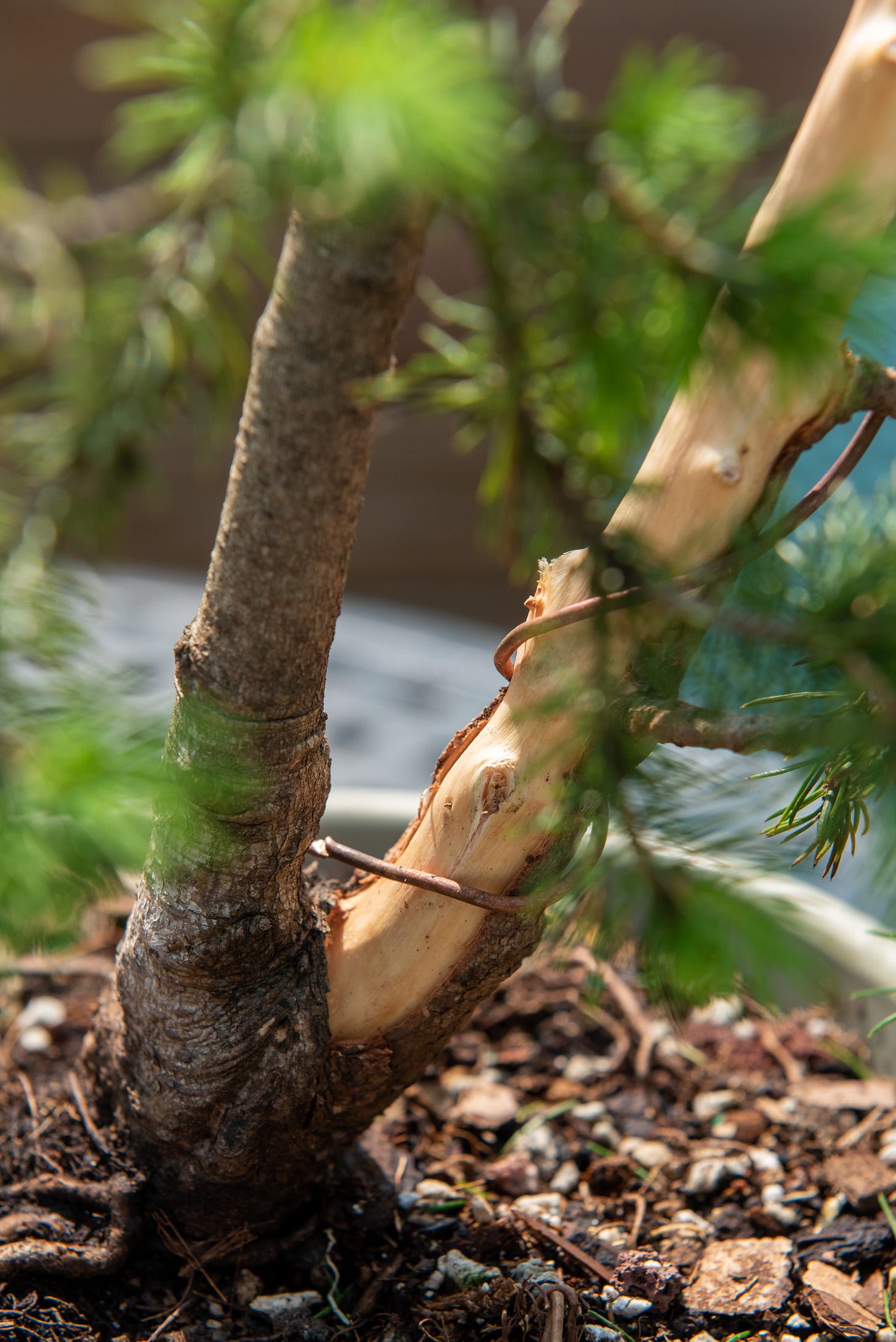
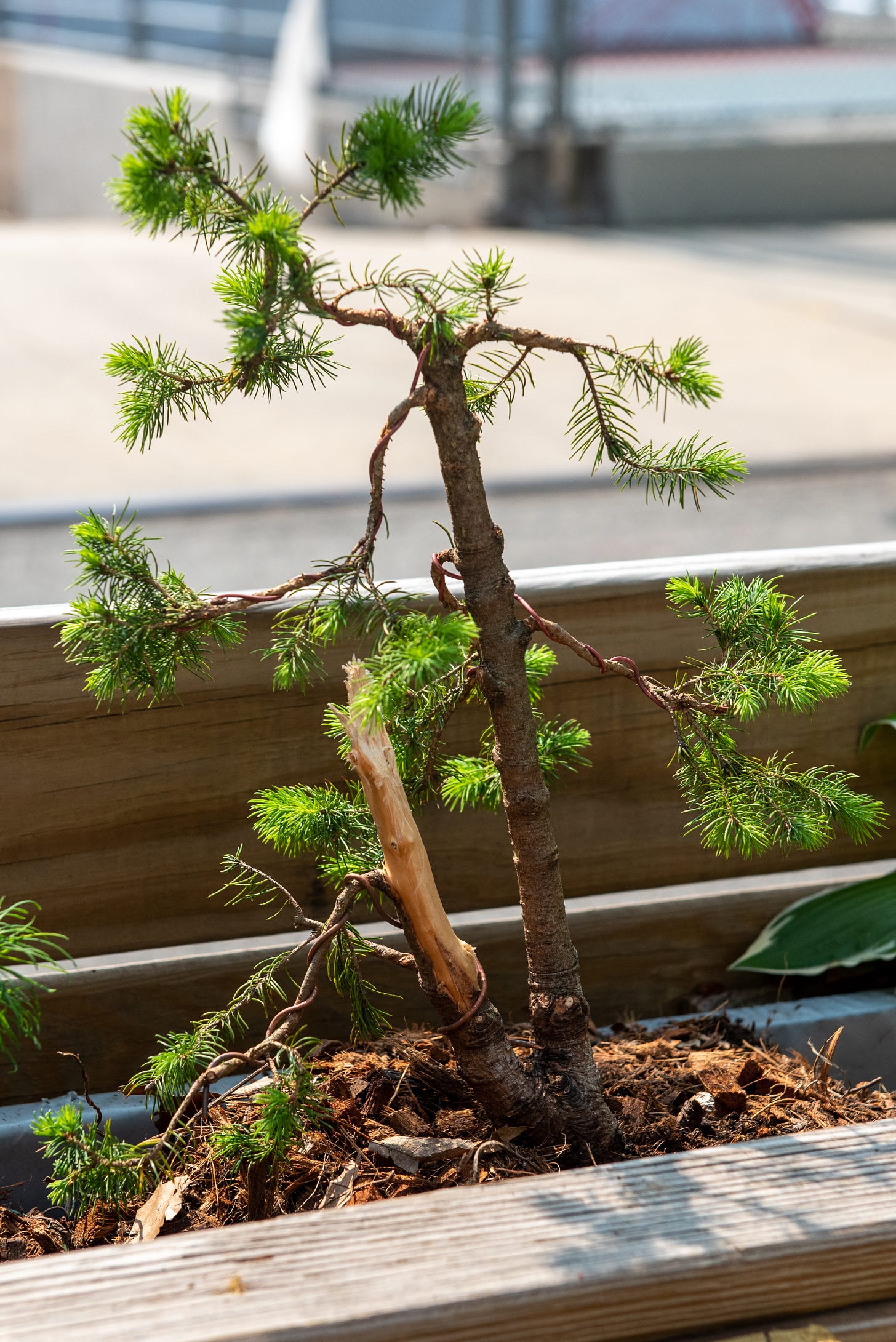
nodded vigorously along with so much of this. love learning from you!